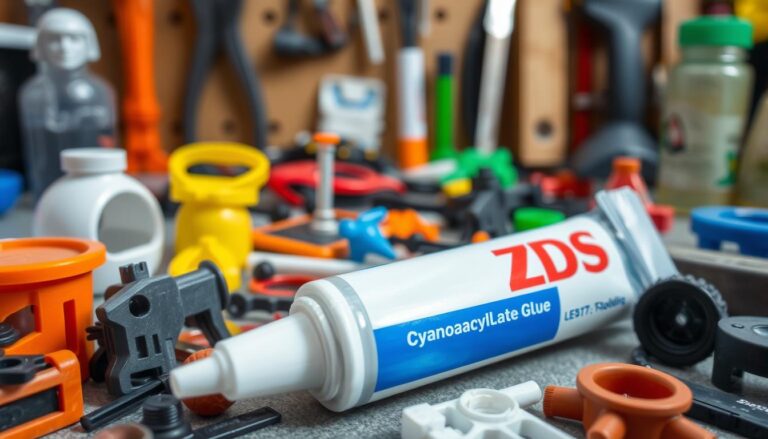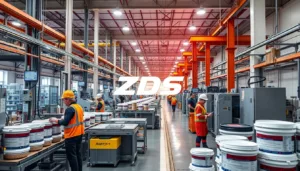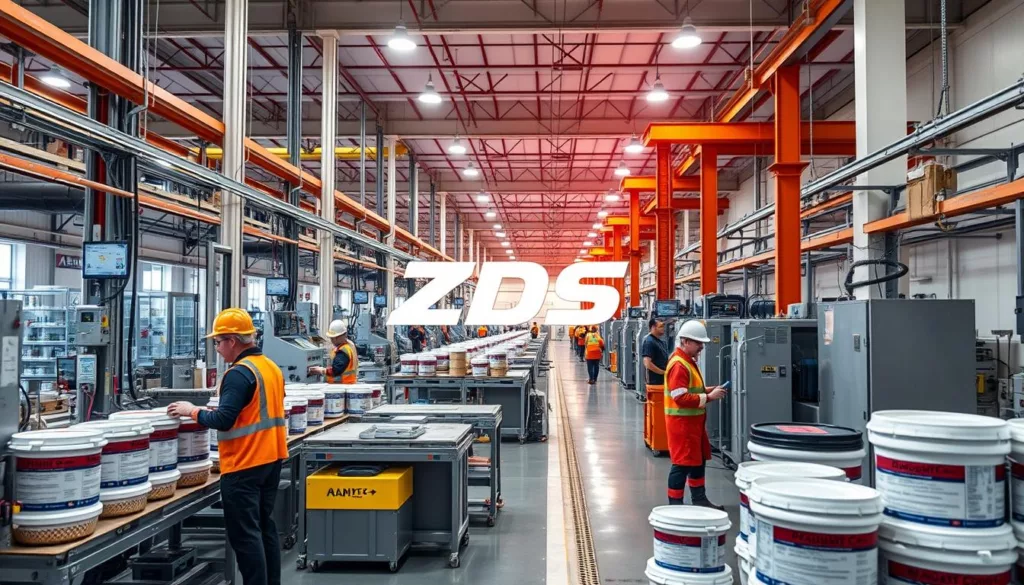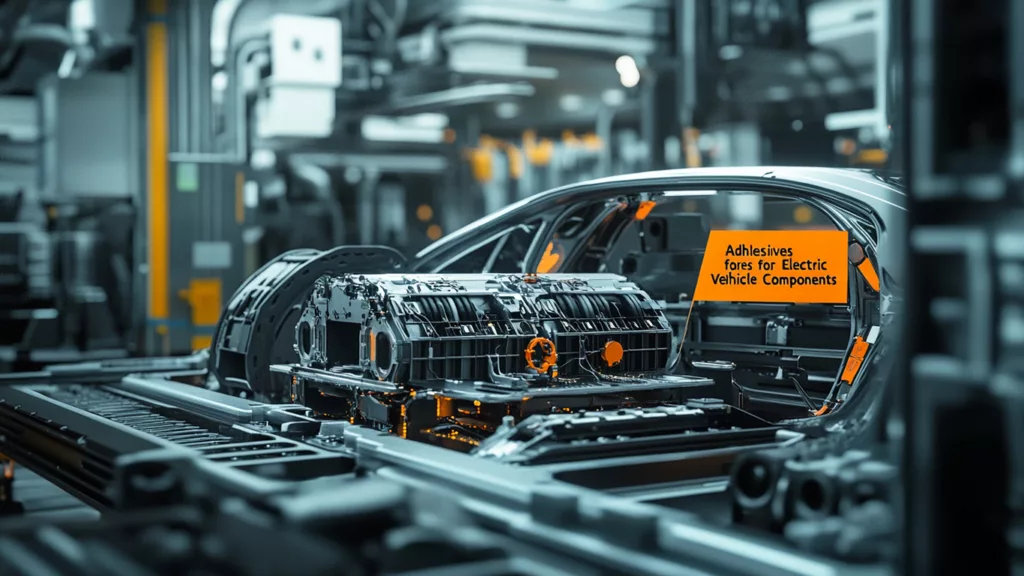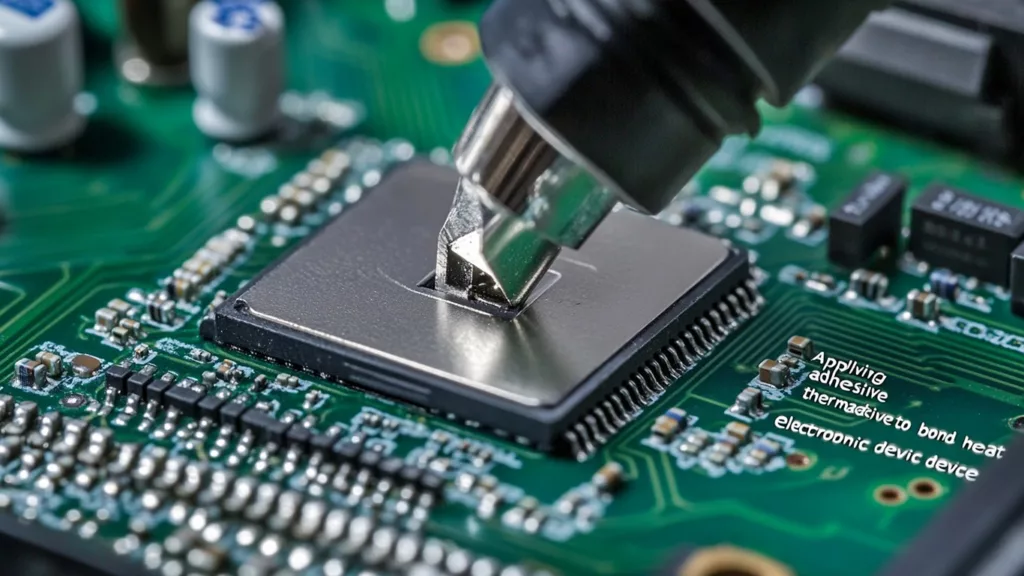Securing strong, durable bonds on plastic is key. The best cyanoacrylate glue, or super glue, is essential for this. It sets quickly and sticks firmly, making it a favorite among DIYers and pros alike.
Our guide highlights the top products and best practices for a strong bond. Permabond offers a range of cyanoacrylate adhesives for different challenges. These include high temperature resistance and non-blooming properties. For more details, check here.
Choosing the right glue makes a big difference in your project’s success. We’ll guide you through the best plastic bonding options and techniques. This ensures your work is done accurately and confidently.
Key Takeaways
- Cyanoacrylate glue, or super glue, is ideal for plastic bonding.
- Different formulations cater to various bonding challenges.
- High temperature resistance and low odor options are available.
- Proper surface preparation is essential for a strong bond.
- Companies like Permabond offer specialized cyanoacrylates.
Introduction to Cyanoacrylate Glue
Cyanoacrylate glue, often called instant adhesives, is quick and reliable. It’s praised for its strong attachment and fast action. It sticks well to many surfaces. It’s become a favorite for many uses, especially for plastics.
What is Cyanoacrylate Glue?
This glue bonds super fast because of a reaction with moisture. It creates a strong link in seconds. ZDS™ is known for reliable cyanoacrylate adhesives. For detailed info, check the ZDS Chemical Guide.
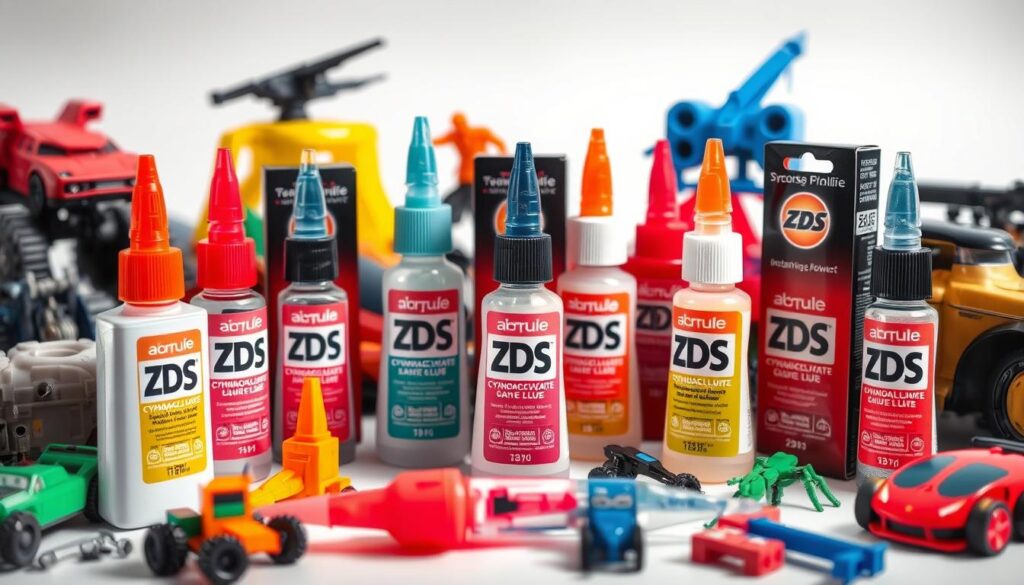
Why Use Cyanoacrylate Glue for Plastic Bonding?
Instant adhesives are great for plastic for many reasons. They work fast, reducing wait time. The bond they form is strong and lasts long. Also, they handle temperature changes and chemicals well. These qualities make cyanoacrylate ideal for plastic projects, big or small.
Top Brands of Cyanoacrylate Glue
Choosing the right cyanoacrylate glue for plastic is important. You want a brand known for being a top choice. We’ve made a list of the top cyanoacrylate brands from consumer feedback and efficiency tests. Each one has special qualities that make it a good choice for attaching plastic.
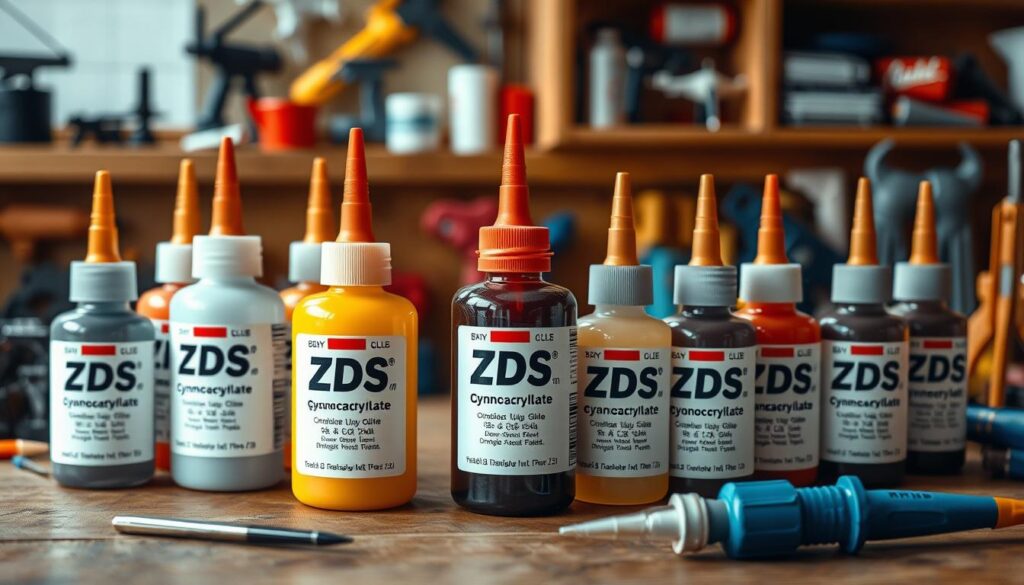
| Brand | Key Features | Customer Rating |
|---|---|---|
| Loctite | High strength, fast setting, versatility | 4.7/5 |
| Gorilla Glue | Temperature resistance, moisture resistance, long shelf life | 4.6/5 |
| 3M Scotch-Weld | Industrial-grade, excellent durability, multi-surface adhesion | 4.5/5 |
| ZDS | Flexible bonding, easy application, non-clogging nozzle | 4.4/5 |
| Permatex | Crystal-clear finish, precision applicator, rapid cure time | 4.3/5 |
Loctite is known for its strong and versatile bond. Gorilla Glue stands out for resisting heat and moisture. It’s one of the most trusted for attaching plastic.
The efficiency of 3M Scotch-Weld makes it a top choice. ZDS is great for its flexible attachment and ease of use. Permatex rounds out our list with a clear finish and fast-setting time.
Factors to Consider When Choosing Cyanoacrylate Glue for Plastic
Choosing the right cyanoacrylate glue for plastic is vital for great results. We’ll look at important factors to help you choose wisely.
Plastic Material Compatibility
Not every cyanoacrylate glue works well with all plastics. It’s important to make sure the glue fits the plastic you’re using. Glues are often made for specific plastics like ABS, PVC, or polycarbonate. Picking the wrong one can lead to weak bonds. Always check the manufacturer’s guidelines for the best results and durability in your projects.
Industrial-Strength Bonding
For projects that need strong adhesion, pick a glue with industrial-strength bonding. This glue stands up to extreme temperatures, impacts, and solvents. These features are key for plastic parts used heavily or exposed to tough environments.
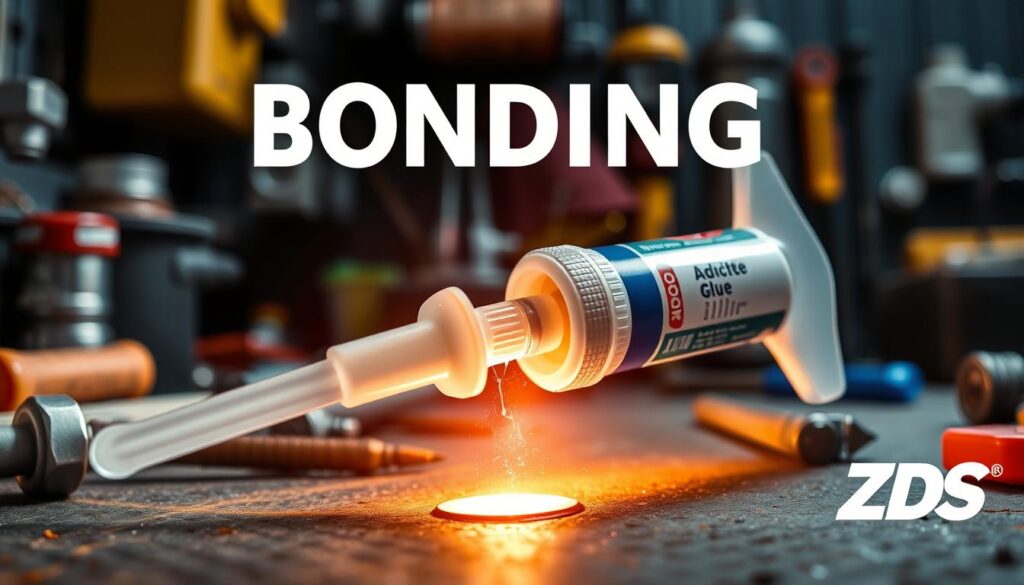
Ease of Use
The way cyanoacrylate glue is applied matters a lot. Think about the packaging, applicator type, and smell. Some glues have precision tips for detailed work, but others might smell bad and need good ventilation. User-friendly options can make your repair work easier and more effective.
How to Use Cyanoacrylate Glue for Plastic Bonding
Learning to use cyanoacrylate glue for plastic is a careful task. Each step, from preparing the surface to how you apply the glue, is key. A good process ensures a strong, durable bond.
Surface Preparation
Start with getting your surfaces ready. Make sure they are clean from dirt, grease, or old glue. Isopropyl alcohol is a good cleaner for this job. Then, use fine-grit sandpaper to rough up the surfaces. This makes the glue stick better.
Application Techniques
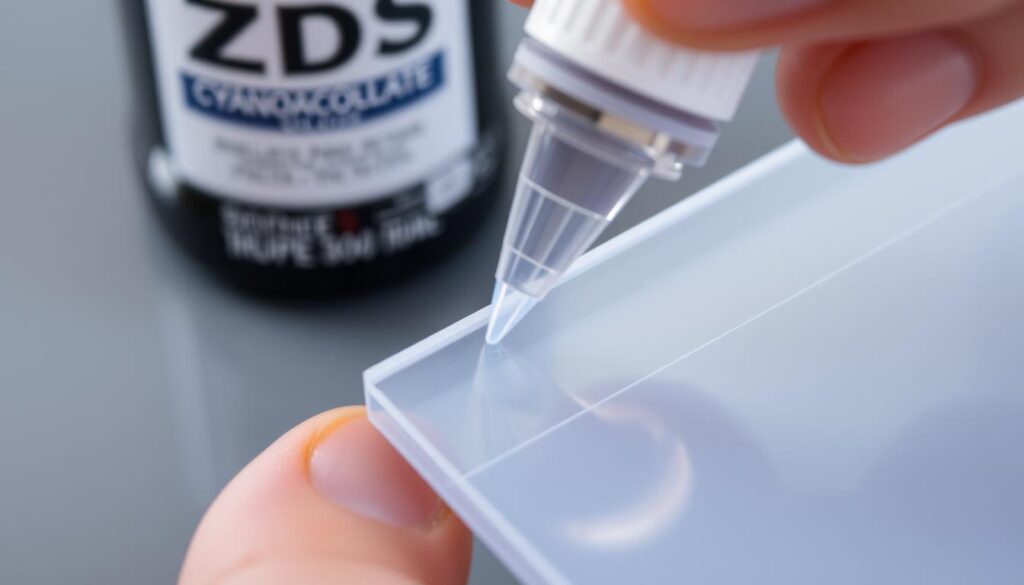
How you put on the glue matters a lot for the bond’s strength. Use a small brush or a nozzle to spread the glue thin and even. A thin layer dries fast and holds strong. For big jobs, try heating the glue to weld the plastic together. It creates a very strong bond.
Setting and Curing Time
Give the glue time to dry and cure properly. Cyanoacrylate glue sets in seconds but fully cures in 24 hours. Don’t move the bonded pieces till then. Remember, the curing time can change with different temperatures and humidity.
Below is a quick look at different ways to apply the glue and what each is best for:
| Technique | Best For | Pros | Cons |
|---|---|---|---|
| Brush Application | Small Precise Bonds | Control, Precision | May require multiple applications |
| Applicator Nozzle | Medium to Large Bonds | Ease of Use, Speed | Potential over-application |
| Plastic Welding | Strong, Extensive Bonds | Durability, Strength | Requires specialized tools |
Best Cyanoacrylate Glue for Plastic Bonding
When looking for the best cyanoacrylate glue for plastic bonding, consider a few key points. Performance, longevity, and how happy users are matter a lot. The ZDS™ adhesive is a top choice. It’s known for its strong bond, easy application, and fast drying time. Many professionals and hobbyists prefer it.
For a better comparison, we’ve prepared a table. It shows top brands and what makes them standout:
| Brand | Performance | Longevity | User Satisfaction |
|---|---|---|---|
| ZDS™ Adhesive | High | Long-lasting | Excellent |
| Loctite Super Glue | Medium | Moderate | Good |
| Gorilla Super Glue | High | Long-lasting | Very Good |
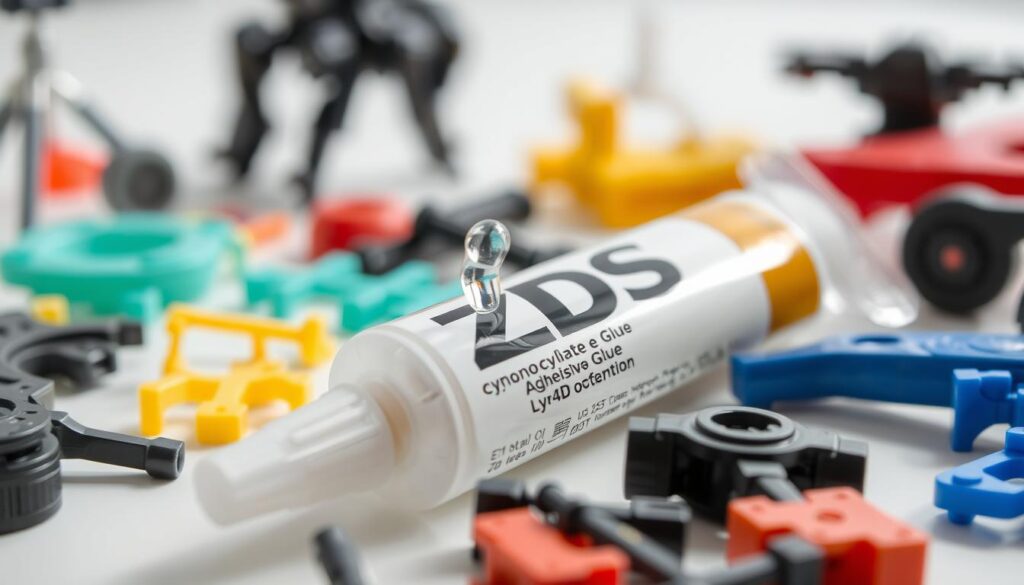
The ZDS™ adhesive shines in many ways, as the table shows. It outperforms others in strength, durability, and positive feedback. Picking a top-quality product like this ensures dependable, long-lasting plastic bonds.
Comparing Cyanoacrylate Glue to Other Plastic Adhesives
Let’s look at how cyanoacrylate glue compares to other adhesives such as epoxy and polyurethane. Each one has its own pros and cons. This is crucial for choosing the right adhesive for your plastic bonding needs.
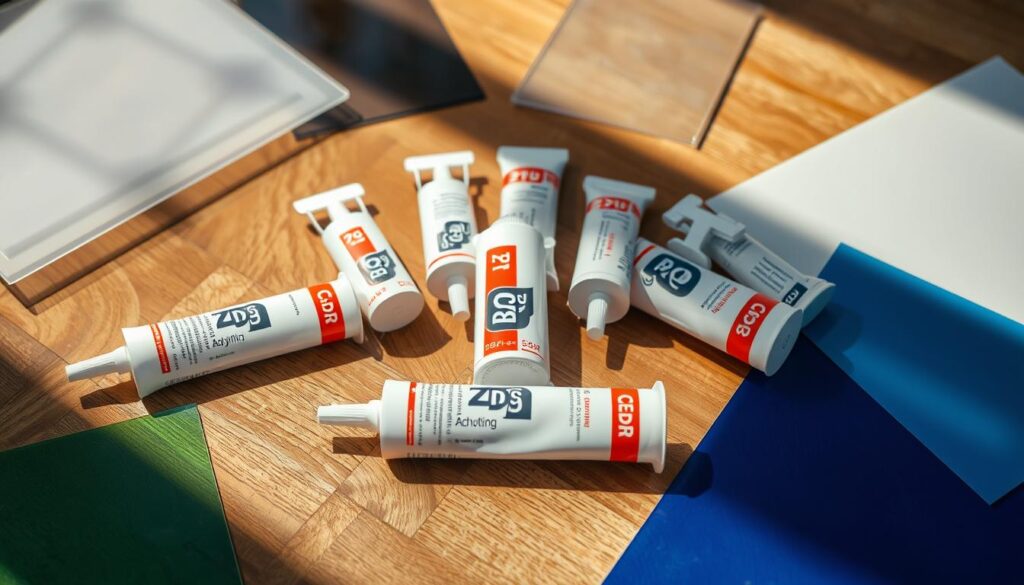
- Quick Bonding: Known as super glue, cyanoacrylate glue bonds quickly. It’s perfect for fast repairs and immediate adhesion.
- High Strength: It offers a strong bond for many plastics, even under strain.
- Ease of Application and Use: It’s easy to apply with little preparation. This makes it handy for various situations.
Epoxy Adhesives
- Rigid and Durable: Epoxy creates a tough, lasting bond. It’s great for harsh conditions.
- Versatile: It works well with more than just plastic. Metals and ceramics too.
- Extended Curing Times: Despite its strength, epoxy takes longer to cure. This might be a downside if you’re in a hurry.
Polyurethane Adhesives
- Flexibility: These adhesives are flexible. They absorb shocks and vibrations, ideal for active settings.
- Water Resistance: They’re superior for outdoor use where water-proofing is needed.
- Moderate Bonding Speed: Polyurethane cures quicker than epoxy but not as fast as cyanoacrylate. It’s somewhere in between.
| Adhesive Type | Quick Bonding | High Strength | Ease of Use | Flexibility | Water Resistance |
|---|---|---|---|---|---|
| Cyanoacrylate | Yes | Yes | Yes | No | No |
| Epoxy | No | Yes | Moderate | No | Somewhat |
| Polyurethane | Moderate | Moderate | No | Yes | Yes |
Understanding the benefits of each adhesive lets us choose the best one for our project. If you need something to bond quickly, cyanoacrylate is often the best choice. It’s especially true for jobs needing fast adhesion and strong bond.
Benefits of Using Cyanoacrylate Glue for Plastic Repairs
Cyanoacrylate glue is a top choice for fixing plastics. It works well for many tasks. It offers key advantages.
Fast Setting Time
Instant adhesives dry quickly. This makes repairs fast. ZDS™ has adhesives designed for quick use. They boost efficiency.
Strong Adhesion
Cyanoacrylate glue sticks really well. Even tiny amounts make strong bonds. It is perfect for various projects, from car parts to electronics.
Its versatility stands out. It can connect a wide range of materials firmly.
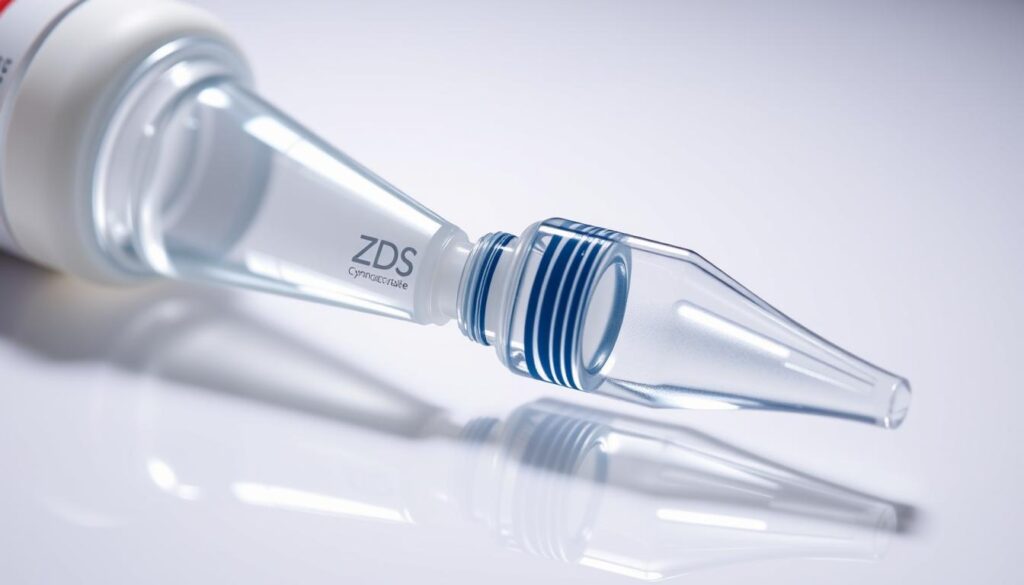
Versatility
This glue’s versatility is amazing. It’s great for many plastics. It adapts to different tasks easily.
From aerospace to home repairs, its strong stick ensures success. For more on these glues, check ZDS™. They have a full guide on structural acrylic adhesives.
Common Issues and Troubleshooting Tips
Using cyanoacrylate glue for bonding plastic can lead to some issues. It’s key to know how to fix these problems for a better experience. Here, we cover tips on fixing bonding failures and handling glue safely.
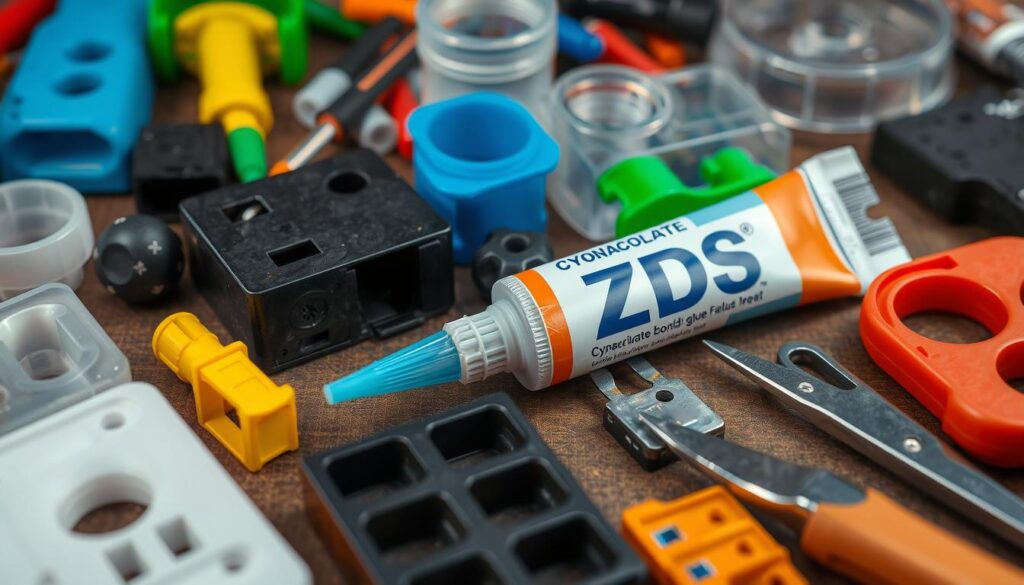
Dealing with Bonding Failures
Bonding failures can happen for several reasons. Lack of surface cleaning or wrong application can cause them. Here are ways to solve these bonding failures:
- Surface Re-cleaning: Make sure both surfaces are clean of any dirt, oil, or moisture before using the glue.
- Reapplication: Put a thin layer of glue on and press the surfaces firmly together. Wait for the glue to set as directed.
- Using Activators: Sometimes, using accelerators can make the glue work better.
Removing Excess Glue
Too much glue can cause ugly marks and bonding problems. Here’s how to remove any extra glue safely:
- Acetone: Put a bit of acetone on a cotton swab to get rid of extra glue.
- Sanding: After the glue dries, gently sand the spot with fine-grit sandpaper.
- Scraping: Use a plastic scraper to scrape off extra glue carefully.
Avoiding Skin Contact
Being safe while using adhesives is very important. To use glue safely and keep it off your skin, do the following:
- Wear Gloves: Always have gloves on to protect your hands.
- Work in a Well-Ventilated Area: Make sure there’s enough airflow to lower the risk of breathing in fumes.
- Immediate Washing: If any glue gets on your skin, wash it right away with soap and warm water.
By using these tips, we can do better at our plastic bonding projects with cyanoacrylate glue.
Innovative Uses of Cyanoacrylate Glue for Plastic Welding and Joining
Cyanoacrylate glue has changed the game in plastic welding and joining. It’s not just for quick fixes anymore. Its versatility leads to many new uses.
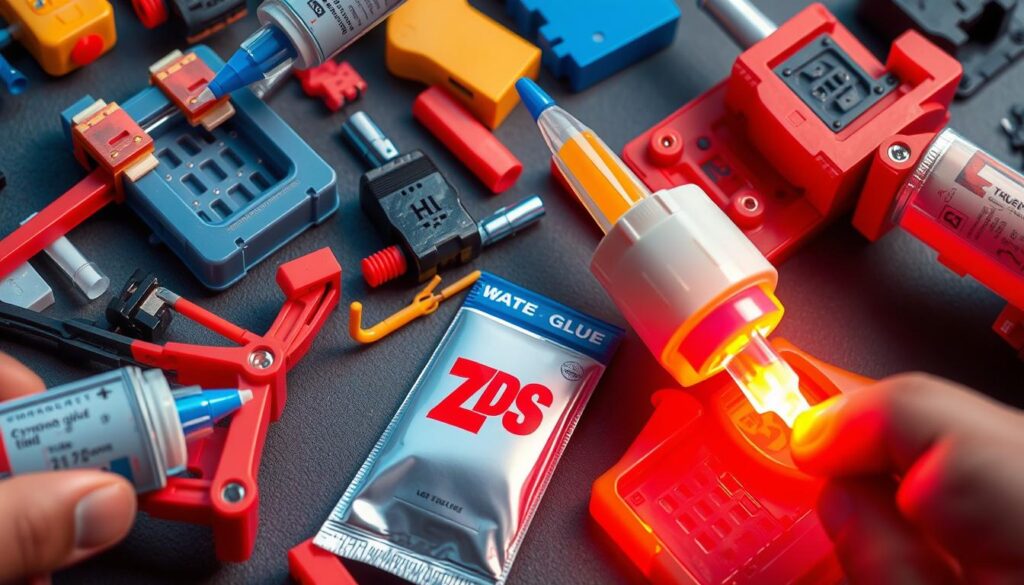
In rapid prototyping, this glue is essential. Engineers bond plastic parts quickly, speeding up development. This creates strong bonds for testing new designs.
The automotive sector has seen big improvements with cyanoacrylate glue. It makes durable joints for car parts, like dashboards and engine covers. This cuts down manufacturing time a lot.
In medical devices, cyanoacrylate glue is critical. It helps make strong bonds for things like syringes and catheters. This ensures these devices are safe and reliable for patients.
Hobbyists and DIY fans also love this glue. They use it for model kits and home repairs. It’s easy to use and dries quickly, which is great for detailed projects.
Consumer electronics benefit from this glue too. It joins plastic parts in laptops, phones, and consoles, making them last longer. The strength and precision of the adhesive are key.
The uses of cyanoacrylate glue in plastic welding are growing as more industries see its value. It offers solid bonding solutions. This adhesive is reshaping traditional methods and advancing technology.
Conclusion
Cyanoacrylate glue is the top choice for plastic bonding. It’s known for its unmatched strength and quick-setting feature. This article covered its advantages in detail. We looked at great brands like Gorilla Glue and Loctite, noting the importance of strong bond and easy application.
When choosing the best glue, consider material compatibility and the strength of the bond. It’s essential for long-lasting repairs. We provided a guide on preparing the surface, how to apply the glue, and curing times. This shows why this glue is preferred for home and industrial use.
Compared to other adhesives, cyanoacrylate glue sets quickly, holds strong, and works on many materials. We shared tips for solving common problems. Highlighting the ZDS™ brand, we’ve shown that cyanoacrylate glue is the best for quick and dependable plastic repairs.
FAQ
What is the best cyanoacrylate glue for plastic bonding?
The best glue for plastic is one that sticks well and dries quickly. ZDS™ is known for making top-notch adhesives for plastic.
Why should I use cyanoacrylate glue for plastic repairs?
Cyanoacrylate glue, or super glue, is fast, strong, and easy to handle. It’s perfect for fixing plastics.
How does cyanoacrylate glue work?
This glue reacts with air moisture and dries in no time. It’s called instant adhesive because it cures so quickly.
Can cyanoacrylate glue be used on all types of plastic?
While it works on many plastics, it’s good to check the material first. There are special glues for tough plastics.
What are the top brands of cyanoacrylate glue for plastic bonding?
Top brands include Gorilla Glue, Loctite, and ZDS™. They’re acclaimed for their strong plastics adhesives and positive reviews.
What factors should I consider when choosing cyanoacrylate glue for plastic?
Look at the plastic’s type, the glue’s strength, and how easy it is to use. Also, consider the project’s needs like resistance to heat and impacts.
How should I prepare my plastic surfaces before applying cyanoacrylate glue?
Clean the plastic well to remove dirt and oil. A rough surface can help the glue stick better. Ensure the surface is dry before applying the glue.
What are the proper application techniques for cyanoacrylate glue?
Put a small amount of glue on one surface, then press them together right away. Hold for a few seconds for a firm bond. Too much glue can weaken the bond.
How long does cyanoacrylate glue take to set and cure?
It sets within seconds and fully bonds in about 24 hours. The cure time varies by product and conditions.
How does cyanoacrylate glue compare to other plastic adhesives?
Cyanoacrylate glue sets faster and is easier to use than epoxy or polyurethane. Yet, it might not fit every plastic type or heavy-duty job.
What are the benefits of using cyanoacrylate glue for plastic repairs?
Its advantages include quick drying, strong hold with little glue, and it works on many plastics. It’s great for fast, dependable fixes.
How can I deal with bonding failures when using cyanoacrylate glue?
If a bond fails, clean the plastic again, ensure it’s dry, and roughen it a bit. Use the glue in a place with good air flow to help it cure right.
How do I remove excess cyanoacrylate glue from plastic surfaces?
Soften the glue with a remover or acetone, then scrap it carefully with a plastic tool. Check on a small spot first to avoid damage.
How can I avoid skin contact with cyanoacrylate glue?
Wear gloves like nitrile or latex to keep glue off skin. If you get some on you, use warm soapy water to soak it off gently. Don’t use sharp objects.
Are there innovative uses for cyanoacrylate glue in plastic welding and joining?
Yes, this glue is often used in new ways for joining plastics, especially for detailed or strength-needed projects. It can securely bond tricky plastic parts.

